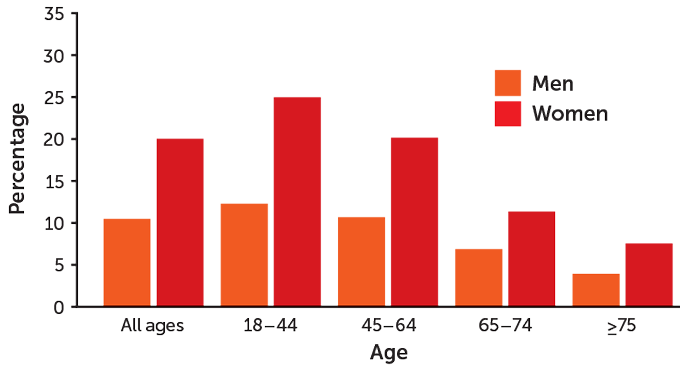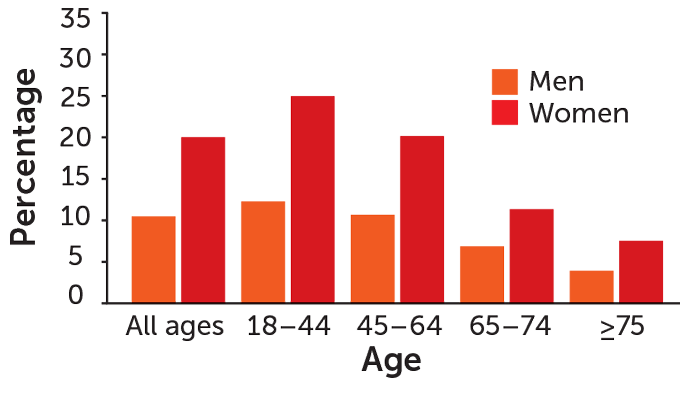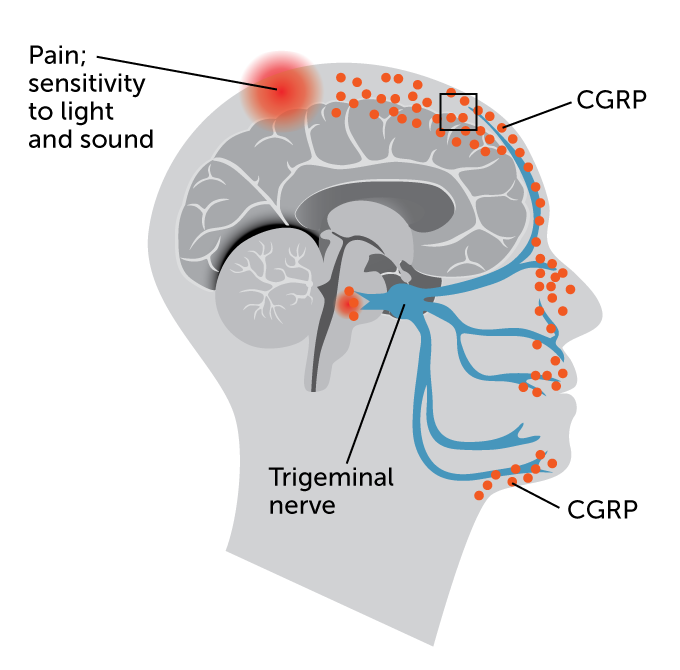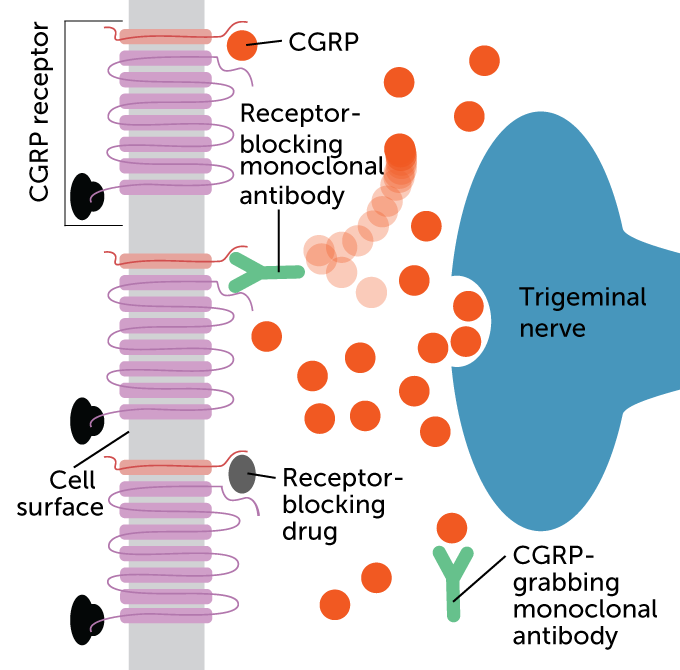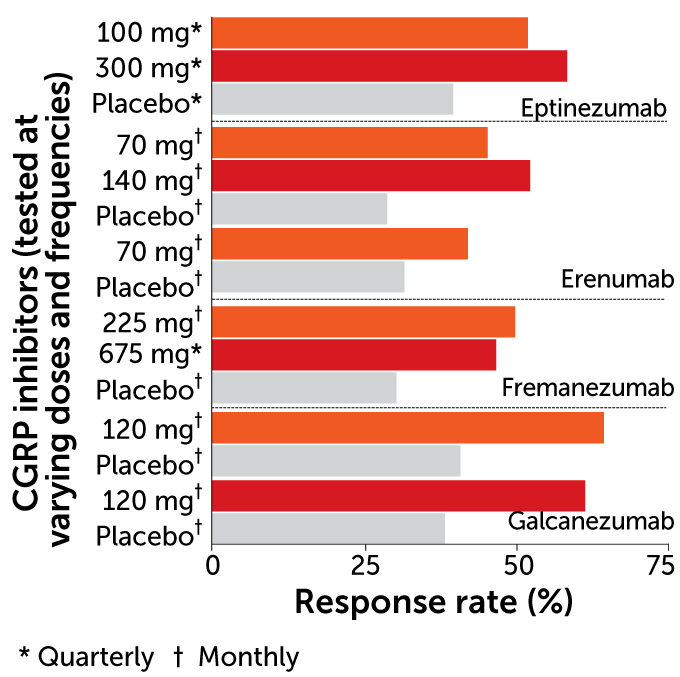This post was originally published on this site
Hayley Gudgin of Sammamish, Wash., got her first migraine in 1991 when she was a 19-year-old nursing student.
“I was convinced I was having a brain hemorrhage,” she says. “There was no way anything could be that painful and not be really serious.”
She retreated to her bed and woke up feeling better the next day. But it wasn’t long until another migraine hit. And another. Taking a pill that combines caffeine with the pain relievers acetaminophen and codeine made life manageable until she got pregnant and had to stop taking her medication. After her son was born, the migraines came back. She started taking the drugs again, but they didn’t work and actually made her attacks worse.
By the time Gudgin gave birth to her second son in 1997, she was having about 15 attacks a month. Her symptoms worsened over time and included severe pain, nausea, sensitivity to light, swollen hands, difficulty speaking, vomiting and diarrhea so intense she often wound up dehydrated in the emergency room.
“It hit me [that] I had to do something when I was vomiting in the toilet, and my 3-year-old came and pulled my hair back,” she says. “It was no way to live — and not just because of the pain. You go to sleep every night not knowing how you’re going to wake up. You make plans knowing you might have to cancel them.”
A headache specialist prescribed several preventive medicines, but each caused side effects for Gudgin, including weight gain and kidney stones. Then, in 2018, Gudgin read about a new type of treatment for frequent migraine sufferers. Her neurologist agreed it was worth a try. After much wrangling with her insurance company — the drug is costly, and she had to prove that two other drugs had failed to help her — she got approval to take it.
In August 2018, Gudgin received her first monthly injection of erenumab, sold as Aimovig. By the end of September, she was down to one or two attacks a month. “And the migraines I do get are usually gone within six hours. I don’t have to go to the ER or lie in a dark room all day,” she says. “It’s just been life changing.”
Gudgin injects the drug into her leg once a month using a device similar to an EpiPen. Erenumab is one of four monoclonal antibodies, manufactured proteins that can bind to substances in the body, that have been approved since 2018 by the U.S. Food and Drug Administration to prevent migraines. The antibodies inhibit the action of a neurotransmitter called calcitonin gene-related peptide, or CGRP, either by changing the peptide’s shape or attaching to its receptors in the brain.

The drugs have changed the game for some migraine sufferers. Roughly half of people who took one of the four drugs in clinical trials saw at least a 50 percent reduction in monthly migraines, says neurologist David Dodick of the Mayo Clinic in Phoenix, who reported the findings at a Migraine Trust International Symposium in October. About a third of patients had a 75 percent drop in migraine days.
The CGRP-blockers appear to be an improvement over existing preventive treatments, which were developed for other disorders. The newer drugs were designed specifically to target one of the mechanisms that researchers think leads to the painful episodes.
Doctors are embracing the new drugs because they can work better and generally have much fewer side effects than other options. “It’s really beneficial for improving quality of life in our patients with migraines. [The new drugs] don’t cause weight gain, sleepiness, brain fog,” says neurologist Nina Riggins, a headache specialist at the University of California, San Francisco.
And the options for blocking CGRP are expanding. Rimegepant, or Nurtec, is one of several drugs known as gepants that bind to the CGRP receptor. The drug, an oral tablet rather than a shot, was approved as a treatment for acute migraine in February 2020. When taken every other day, rimegepant appears to also offer some benefit as a preventive, as reported January 2 in the Lancet.
Nothing typical
Migraine is the third most common disorder in the world, according to the World Health Organization. Migraines or severe headaches affect more than 15 percent of U.S. adults, striking women twice as often as men, the U.S. Centers for Disease Control and Prevention reports. In all, more than 39 million Americans get migraine attacks, which can last four to 72 hours.
Along with the most common symptom — severe throbbing pain in the head — patients can experience sensitivity to light, smells and sound; dizziness; vomiting; numbness; and visual disturbances such as blind spots and tunnel vision.
“Migraine is probably more than one disease,” says neurologist Richard Lipton of Albert Einstein College of Medicine in the Bronx, N.Y. “There are more than 40 identified genes that contribute to the risk of migraine. What that means is that there are multiple pathways that lead to migraine, and as a consequence of that, migraine is not a one-size-fits-all condition.”
Although many genes have been identified as playing a role, researchers have not pinpointed the exact mechanisms involved with migraine. The long-held notion of blood vessel dilation being to blame has even fallen out of favor, says Amaal Starling, a neurologist at the Mayo Clinic in Scottsdale, Ariz.
“We know pain is caused by … abnormal activity in multiple parts of the brain, including the trigeminal nerve, trigeminal nucleus caudalis in the brain stem, and the pain networks,” Starling says. This leads to migraine-related pain in the head, face and neck.
Some theories suggest that migraine occurs — and a cascade starts — when nerve cells in the brain get overexcited and stimulate the trigeminal nerve, which controls movement of the jaw muscle and sensations of touch, pain and temperature in the face. The trigger can be hormonal changes, stress, food, smells, sounds, a visual stimulus or some combination. The first step in the cascade releases CGRP in the brain, which causes transmission of pain signals.
The pain signals trigger an additional release of CGRP and other peptides. These molecules tell the brain to increase the dilation of blood vessels, releasing toxic chemicals. This is why, at least for some people, CGRP may be a big part of the problem.
No easy fix
Treating chronic migraine is often a two-pronged approach: Try to prevent migraine attacks by managing the underlying cause, and stop attacks when they strike.
Part of a long-lasting problem with chronic migraine is that drugs available for prevention were developed for other diseases, such as hypertension, depression and epilepsy. For example, doctors realized that patients with high blood pressure who also had migraines reported fewer migraines after taking beta-blockers. The medicine slows down the heart by blocking the effect of adrenaline, a hormone that speeds up circulation. Similar stories led to the use of anticonvulsants, antidepressants, antianxiety medications, narcotics and antihistamines.
None of these drugs are without side effects, and they are ineffective for 40 to 50 percent of chronic migraine patients, according to a 2017 analysis of insurance claims data by Dodick and colleagues in Cephalalgia. Within six months of starting four commonly used migraine prevention drugs, 75 percent of patients had stopped using them. The researchers assume, based on other studies, that the main reasons for stopping were side effects and lack of efficacy.
Side effects include weight gain, nausea, brain fog, drowsiness, speech disturbance and lack of concentration. And sometimes the treatments themselves can bring on headaches. “Most of the acute treatments that we use for migraine, if they’re taken too often, cause medication overuse headaches,” Lipton says.
Focus on one pathway
Researchers realized about 20 years ago that CGRP plays a role in migraine. The peptide helps nerve cells communicate with each other. “[CGRP] is very heavily represented in the pathways that are involved in migraine,” Lipton says.
In one study, researchers measured CGRP levels in the blood and found higher levels in people who had migraines than in people who did not. And among those who experienced migraines, CGRP blood levels went up as migraines came on. In a separate study, when an induced migraine attack was effectively treated, CGRP blood levels came down, says Deborah Friedman, a neuro-ophthalmologist at University of Texas Southwestern Medical Center in Dallas.
The work led to the creation of the four monoclonal antibodies approved for preventing migraines. One of them, erenumab, the drug that’s helping Gudgin, mimics the shape of CGRP, binding to the CGRP nerve receptor so the CGRP has no place to attach when it arrives at a nerve cell. The other three drugs — galcanezumab (Emgality), fremanezumab (Ajovy) and eptinezumab (Vyepti) — attach to CGRP itself, changing its shape so it can’t fit into the receptor. All four drugs are given as monthly or quarterly injections or intravenous infusions.
These monoclonal antibodies help some patients and produce fewer side effects than existing treatments. In a 2019 survey of nearly 600 people taking galcanezumab to prevent migraines, conducted by the drug’s maker, Indianapolis-based Eli Lilly, nearly 80 percent reported their migraine as “better” overall since starting the medication. In a study funded by eptinezumab’s manufacturer, H. Lundbeck A/S in Copenhagen, more than 80 percent of about 700 patients reported they had a 50 percent or greater drop in migraine days in at least one four-week interval, and about one-third of patients taking intravenous eptinezumab saw that same drop over the entire 24-week study.
Only 20.5 percent of patients taking a placebo saw the same drop in migraine days, as reported last October in the Journal of Headache and Pain.
“Most of the acute treatments that we use for migraine, if they’re taken too often, cause medication overuse headaches.”
Richard Lipton
The gepants go after the same pathway, but can be taken orally because they are small molecules. Gepants are prescribed on an as-needed basis to stop acute migraines. Recent studies suggest they may have preventive benefits too, according to an April 2020 report in Headache.
Gepants have been studied since 2004, but earlier versions caused liver problems, so they never made it to market. In 2019 and 2020, the FDA approved two formulations — ubrogepant, or Ubrelvy, and rimegepant, or Nurtec. Overall, the gepants appear to stop migraine pain within two hours in about 20 percent of patients and do not bring on the overuse headaches that are common with other acute treatments.
Two additional gepants, atogepant and zavegepant, are still in patient trials. Atogepant is being evaluated as a preventive, while zavegepant is being looked at as an acute medication.
Lipton and colleagues reported in the Lancet on January 2 the results of a Phase II/III prevention study of rimegepant, funded by Biohaven Pharmaceuticals of New Haven, Conn. Of 348 participants who took the drug every day, 49 percent experienced a 50 percent or greater reduction in moderate to severe migraine days each month. But the placebo group did almost as well, with a 41 percent reduction.
The need for new ideas
Clearly, this variety of CGRP inhibitors don’t work for everyone. And they cause side effects for some people, including constipation, increased risk for upper respiratory tract infections and injection-site pain.
Amy Chesney, a retired software engineer who lives in Bossier City, La., started getting migraines in 1992, tried three different CGRP drugs and found that they made her depressed and didn’t do anything for her migraines.
There’s also some concern about long-term effects from CGRP monoclonal antibodies, since CGRP exists in the peripheral nervous system as well as the brain. For instance, CGRP causes blood vessels to dilate in a variety of systems including the intestines.
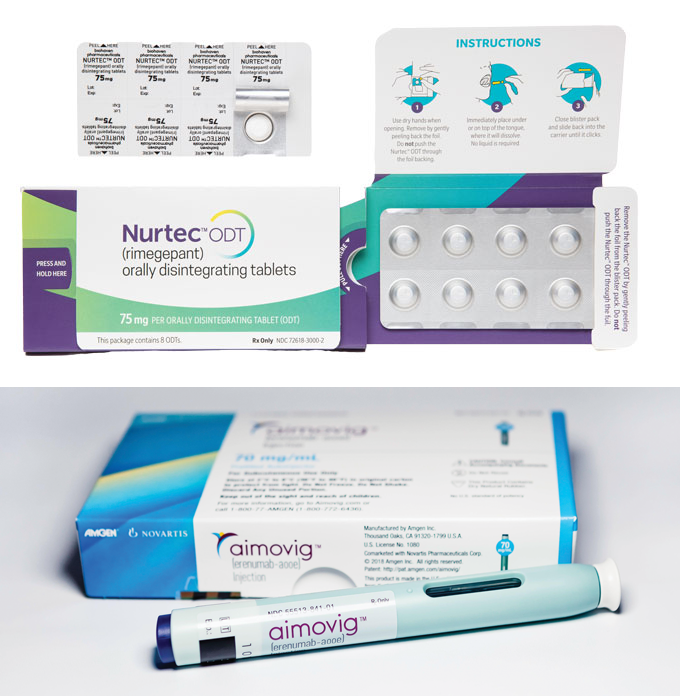
Doctors say this is why constipation is one of the drugs’ most common side effects. CGRP is also involved in hair follicles, and some patients have reported hair loss. And CGRP is important to blood vessel health, which is why researchers say it will be important to complete long-term studies to look for cardiac issues, although so far none have surfaced.
Finally, the drugs are expensive and, as Gudgin discovered, insurance companies can make patients and doctors jump through hoops before covering the cost, says Matthew Robbins, a neurologist at Weill Cornell Medicine and New York-Presbyterian Hospital in New York City.
When erenumab received FDA approval, its manufacturers, Novartis of Basel, Switzerland, and Amgen of Thousand Oaks, Calif., set a price of $6,900 per year for the drug. “Generally, you can’t just prescribe them straight away. [Patients] have to either not tolerate established medications or [show] that they do not work first,” Robbins says.
It took two denials and three months before Gudgin’s insurance company would approve payment. First, she had to prove that she had tried cheaper preventive medications. Then she had to confirm that she got migraines frequently enough to classify her disease as chronic.
Gudgin says that although her insurance company finally paid for her treatment, she does have a rough time at the beginning of the year when her $4,000 deductible has not yet been met. However, it’s worth it for her, she says, and she would pay out of pocket if she had to. “I’m not stuck in a darkened room. I have a life again. You can’t put a price on that.”

